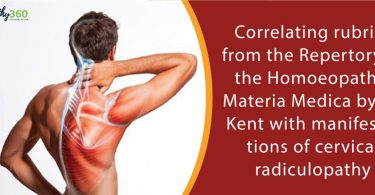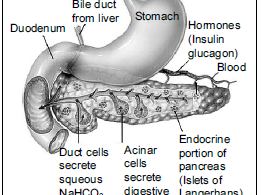Developmental disorders (specific and pervasive) have their onset in infancy and are characterized by moderate to severe neurocognitive delays. With the help of miasmatic prescribing, they can be significantly improved. Prescribing on the basis of miasm has been a challenging task always but if symptoms are categorized and dominant traits are lined up with the closest miasm, the road to cure is laid out.
Keywords: miasm, child psychiatry, chronic diseases, genetics, inheritance, developmental disorders, homoeopathy
Introduction
The creation of human beings is both mysterious and marvellous. Soon after implantation, the egg becomes an embryo and by 8 weeks of intrauterine life, this cluster of cells is recognisably a human.
It is a well-known fact that development begins soon after implantation. A newborn has already been influenced by myriad factors, the result of which has produced wide individual differences among infants. One study by Stella Chess and Alexander Thomas demonstrated a wide range of temperamental differences among newborns.(1)
Development, by definition, means the process in which someone or something changes or becomes more advanced.(2)as a result of continuous interplay between biological predisposition and environmental experiences.(1)
As per International Classification of Diseases 10, disorders of psychological development (F80-88) which can broadly be divided into specific and pervasive developmental disorders, having their onset invariably in infancy, with impairment or delay in development of functions mostly related to central nervous system and a steady course without remissions and relapses.(3)
Having said that, it is also a very well-known fact that the aetiology in most of the psychiatric disorders including developmental disorders is largely unknown. Whatever little is known points out to a multifactorial causation.
Specific developmental disorders (F80-83) encompass disorders of speech, language and expressions on one hand, and impairment in acquiring scholastic skills mainly reading, spelling and arithmetic on the other. (5)
Pervasive developmental disorders (F84) is more specific to distorted social interactions and stereotypical behavior which mainly includes autism spectrum disorder, rett’s syndrome and asperger’s syndrome.(5)
Genetics and heredity play a very important role in the lives right from birth. Children almost always inherit certain characteristics from their parents which manifest on the physical as well as the mental plane.
Homoeopathy, being a holistic science, always takes into consideration the genetic predisposition of a patient.
When treating a child, especially those affected with developmental disorders, it is extremely important to thoroughly understand the possibility of inherited traits, especially if their potential expression is playing a role in disease manifestation.
The answer to these hereditary manifestations and their treatment lies in understanding the theory of chronic diseases by Dr Hahnemann.
Master Hahnemann recognized a group of symptoms with syphilitic background, sycotic background and a mass of symptoms which he termed psoric.(4)
The importance of miasmatic prescribing cannot be stressed enough in case of children as well.
The three miasms represent three broad constitutional types which indicate different susceptibilities to the development of illness.
A detailed study in the three planes, i.e. emotional, intellectual and physical plane, enables to identify the dominant miasm responsible for illness and prescribe accordingly.
The challenge for a homoeopath is to artistically understand and then amalgamate the symptomatology with characteristics of a patient, and at the same time, identify the most suitable miasm, and finally prescribe a medicine, i.e. tailor made and simillimum, in its truest sense.
In specific developmental disorders, expressive language disturbance is estimated to be as high as 6% in children between the age group of 5 and 11 years. The disorder is 2 to 3 times more common in boys than girls, and is most prevalent among children whose relatives have a family history of phonological disorder or other communication disorders.(1)
- Children, with expressive language deficit, are vague when telling a story and use many filler words such as stuff and things instead of naming specific objects (1)– syphilitic or sycotic trait.
- Even simple words, such as mama and dada, or absent from the child’s active vocabulary, and the child points or uses gestures to indicate desires (1)– more often this would be a sycotic trait as a sycotic child’s memory is extremely poor which also affects his scholastic performance.
- Vocabulary in such children is severely limited – syphilitic/sycotic
- Their use of various grammatical structures is also markedly below the age expected levels, and their developmental milestones may be slightly delayed – delay of developmental milestones is a syphilitic trait.
- This later leads to emotional problems involving poor self-image, frustration, and depression (1) – mostly seen in syphilis.
Specific developmental disorder also hosts developmental arithmetic disorder or developmental mathematics disorder or dyscalculia.
- The child presents with arithmetic abilities even below the level expected for the mental age – syphilitic/ sycotic triait
- The problems may include failure to understand simple mathematical concepts, failure to recognize mathematical signs or numerical symbols, difficulty in carrying out mathematical manipulations, and difficulty in learning mathematical tables(5) – this is generally a syphilitic trait as such children are messy and disorganized. Mathematical calculations require a high degree of organization which they lack.
This syndrome is more common (3-4 times) in males and has a prevalence rate of 0.4-0.5 per 1000 population. Typically, the onset occurs before the age of 2½ years, though in some cases, the onset may occur later in childhood. Autism occurring before or after 2½ years of age is not clinically very different.(5)
[A1] Autism spectrum disorder
- Autism denotes marked impairment in social and interpersonal skills such as lack of eye contact, social smile, attachment to near and dear ones (treats people as furniture), abnormal social play(5) – these can be thought of as ‘ developmental milestone’ delay/absence in children which is primarily a syphilitic trait. (Sycosis also shows delay of developmental milestone but mostly one or two milestone is/are delayed only)
- Mental retardation – Only about 25% of all children with autism have an IQ of more than 70. A large majority (more than 50%) of these children have moderate to profound mental retardation (5) – All forms of retardation are a syphilitic trait.
- In spite of the pervasive impairment of functions, certain islets of precocity or splinter functions may remain (called idiot savant syndrome). Examples of such splinter functions are prodigious rote memory or calculating ability, and musical abilities(5) – psoric/ syphilitic
- Abnormal behavioral characteristics., ritualistic and compulsive behavior, mannerisms, stereotyped behaviours such as head-banging, body spinning, hand-flicking, lining-up objects, rocking, clapping, twirling, etc.(1) – syphilitic trait.
Asperger’s syndrome
- Like in autism, children with asperger’s syndrome also show stereotyped behaviour such as lining up objects, head banging, twirling, and hand-flicking – syphilitic trait.
- Children with Asperger’s syndrome may have a sophisticated vocabulary at a young age and such children have often been colloquially called “little professors” but have difficulty understanding figurative language and tend to use language literally (1) – psora ( good memory)
- They may be unusually sensitive or insensitive to sound, light, and other stimuli(1) – psoric trait
- Increased clumsiness with awkward movements and poor coordination(1) – syphilitic trait
Rett’s syndrome
Rett’s syndrome is a very rare but severe, genetic, neurological condition which mostly affects girls. Development is normal till 6 months and symptoms usually become evident at the age of 1-2 years.(1)
- Milestones are delayed – syphilitic trait
- Physical growth is retarded with microcephaly (size of head is small) – syphlitic trait.
- Children stop talking and can have extreme social anxiety. They may stay away from or uninterested in other people, toys, and their surroundings (1). – Sycotic/syphilitic trait.
- Severe mental retardation – syphilitic trait.
Conclusion
Understanding miasmatic expression in children with respect to different disorders is essential for an ideal cure. It is worth the lifetime study of homoeopathic prescribers to be able to recognise these inherited tendencies, either simple or complex, and eradicate them in order to free humanity to develop their highest capacities.
If homoeopaths can raise miasm-free children into miasm-free adults, they would have done their part as disciples of the great Dr Samuel Hahnemann.
References
1. Sadock B.J,Sadock V A,Ruiz P. Synopsis of Psychiatry.Wolters Kluwer.11th ed;2018.1082-1083;1139
2. Cambridge University press.Cambridge dictionary.org.cited 2020/10/02 available from: https://www.google.com/amp/s/dictionary.cambridge.org/amp/english/development
3. World Health Organization. The ICD-10 Classification of Mental and Behavioural Disorders: Clinical Descriptions and Diagnostic Guidelines. Geneva: World Health Organization, 1992. Available from: https://icd.who.int/browse10/2019/en#/F80-F89
4. Green M. J. Miasmatic Children and Homeopathy. Mumbai, India.Hompath classic 8.0. Cited 2020/10/26. Available from:,http://homeoint.org/hompath/articles/3109.html
5. Ahuja N. A short textbook of psychiatry.Jaypee Brothers Med Pub.7th ed; 2011.163-165
About the author
Dr Sarah Malik
Currently pursuing MD (Part-2) in Psychiatry from Bakson Homeopathic Medical College and Hospital, U.P.
BHMS – Nehru Homeopathic Medical College and Hospital, DU.
[A1]1 paragraph





